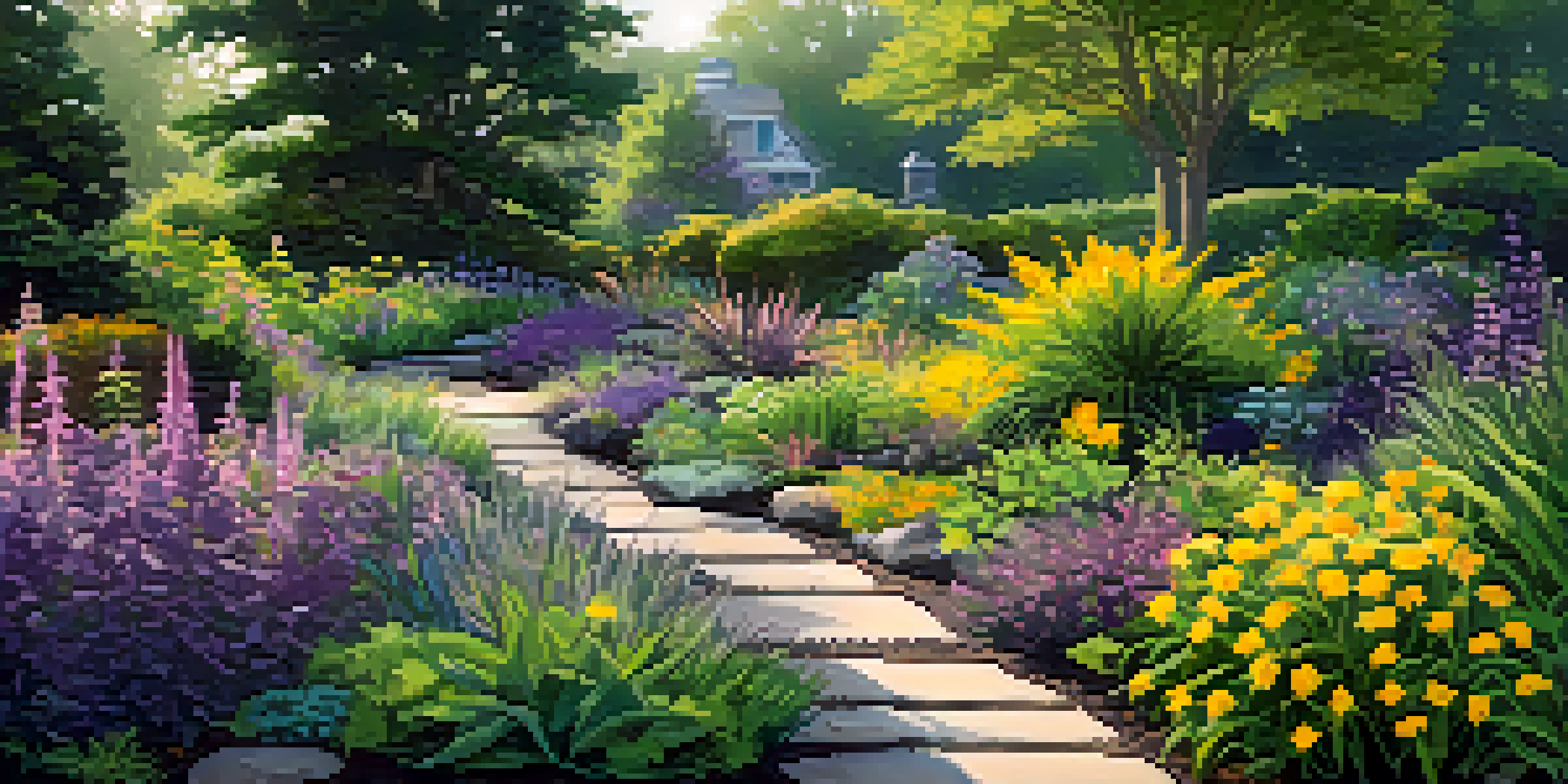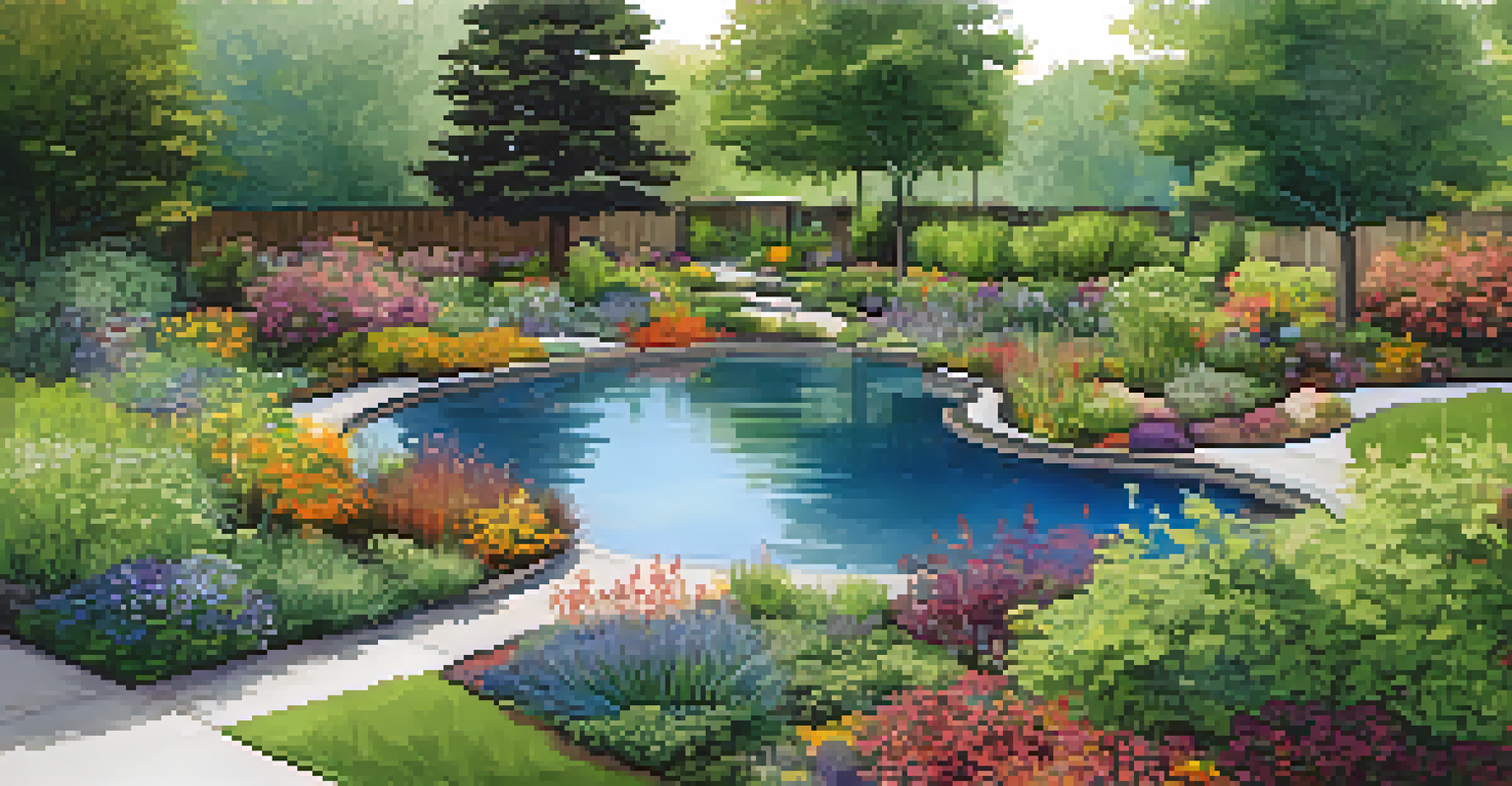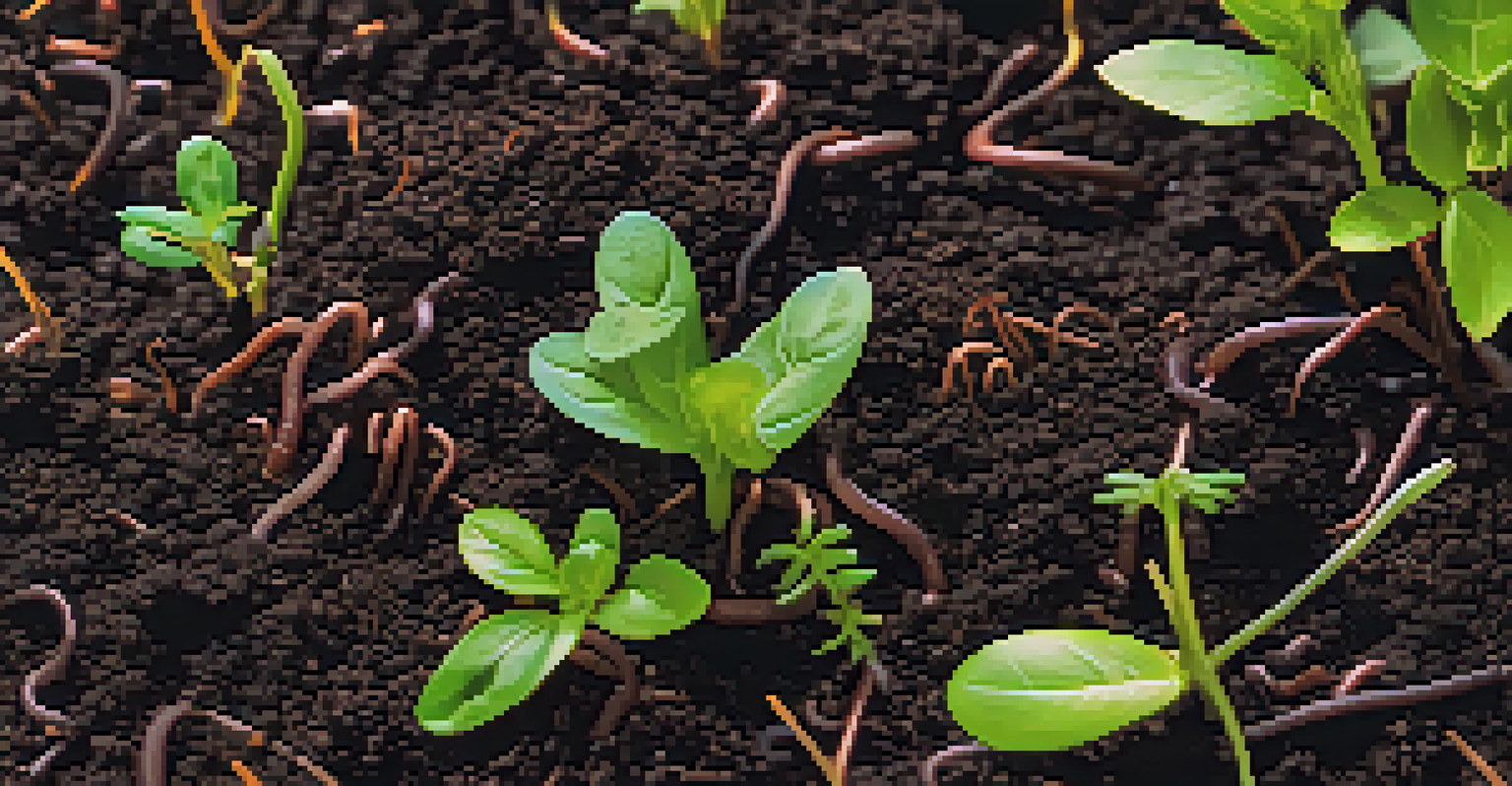Understanding Sustainable Landscaping: A Comprehensive Guide

What is Sustainable Landscaping and Why It Matters
Sustainable landscaping refers to designing and maintaining outdoor spaces in a way that minimizes environmental impact. It emphasizes the use of native plants, organic materials, and efficient water management. By adopting these practices, we not only create beautiful landscapes but also contribute to the health of our ecosystems.
The best time to plant a tree was twenty years ago. The second best time is now.
One of the key benefits of sustainable landscaping is its ability to conserve resources. For instance, native plants are adapted to local climates, which means they require less water and are more resilient to pests. This not only saves you time and money but also reduces the need for chemical fertilizers and pesticides that can harm local wildlife.
Moreover, sustainable landscaping can enhance biodiversity. By creating habitats that support various species, from pollinators to birds, we promote a balanced ecosystem. This interconnectedness is vital for maintaining healthy environments and ensuring that our outdoor spaces thrive for generations to come.
Key Principles of Sustainable Landscaping
There are several guiding principles that underpin sustainable landscaping practices. First and foremost is the focus on using native plants, which are well-suited to the local environment. This means they require less maintenance and are more resistant to diseases, making them a smart choice for any landscape project.

Another important principle is water conservation. Techniques such as rainwater harvesting and drip irrigation systems ensure that water usage is minimized while still keeping plants healthy. Additionally, using permeable materials for pathways can help reduce runoff and promote groundwater recharge.
Embrace Native Plants for Success
Using native plants in landscaping conserves resources, reduces maintenance, and enhances biodiversity.
Lastly, soil health is crucial in sustainable landscaping. Practices like composting and mulching not only enrich the soil but also help retain moisture. Healthy soil fosters strong plant growth and reduces the need for synthetic fertilizers, creating a more sustainable and low-maintenance landscape.
Choosing the Right Plants for Your Landscape
Selecting plants that thrive in your local climate and soil conditions is essential for sustainable landscaping. Native plants are often the best choice, as they have adapted to local weather patterns and pests. This reduces the need for additional care and resources, making them a win-win for both you and the environment.
We do not inherit the earth from our ancestors; we borrow it from our children.
When choosing plants, consider their growth habits and maintenance needs. Grouping plants with similar water and sunlight requirements can simplify care and enhance the overall aesthetic. For example, pairing drought-tolerant plants with those that enjoy occasional moisture can create a visually appealing and functional landscape.
Lastly, think about the seasonal interest your plants provide. Incorporating a mix of perennials, shrubs, and trees ensures that your landscape remains vibrant throughout the year. This diversity not only looks good but also supports various wildlife, creating a thriving ecosystem right in your backyard.
Water Conservation Techniques in Landscaping
Water conservation is a critical aspect of sustainable landscaping, especially in areas prone to drought. Implementing strategies such as xeriscaping, which focuses on using drought-resistant plants, can drastically reduce water usage. This method promotes a landscape that is not only beautiful but also resilient to dry conditions.
Another technique is the installation of rain gardens, which capture and filter rainwater runoff. These gardens can help recharge groundwater while providing a habitat for local wildlife. By strategically designing your landscape to harness natural rainfall, you can minimize your reliance on irrigation.
Water Conservation is Essential
Implementing techniques like rain gardens and smart irrigation significantly reduces water waste in landscaping.
Lastly, consider using smart irrigation systems that adjust watering schedules based on weather conditions. These systems can significantly reduce water waste and ensure that your plants receive the right amount of hydration. Together, these techniques create a sustainable approach to managing water in your landscape.
Soil Health: The Foundation of Sustainable Landscapes
Healthy soil is the backbone of any sustainable landscape. It provides essential nutrients to plants and supports a diverse range of microorganisms. By focusing on soil health, you can create an environment where plants thrive naturally, reducing the need for chemical fertilizers.
One effective way to improve soil health is through the use of organic matter, such as compost. Adding compost enriches the soil, enhances its structure, and helps retain moisture. This not only benefits your plants but also fosters a rich ecosystem of beneficial organisms in the soil.
Additionally, practices like crop rotation and cover cropping can enhance soil fertility and prevent erosion. These methods promote a balanced soil ecosystem, ensuring that your landscape remains vibrant and productive without relying on synthetic inputs.
The Role of Hardscaping in Sustainable Landscaping
Hardscaping refers to the non-plant elements of your landscape, such as paths, patios, and walls. When done sustainably, hardscaping can enhance the functionality of your outdoor space while minimizing environmental impact. Using permeable materials allows water to filter through, reducing runoff and promoting groundwater recharge.
Incorporating native stone or reclaimed materials not only adds aesthetic appeal but also reduces the carbon footprint associated with transportation. These choices blend seamlessly with the natural environment and can create a unique, personalized landscape design.
Healthy Soil Supports Growth
Focusing on soil health through composting and organic practices fosters strong plant growth and a vibrant ecosystem.
Moreover, consider integrating features like rain barrels or bioswales into your hardscaping. These elements work in harmony with the natural landscape to manage water runoff effectively. By thoughtfully designing hardscapes, you contribute to a more sustainable and resilient outdoor space.
Benefits of Sustainable Landscaping for Communities
Sustainable landscaping offers a multitude of benefits that extend beyond individual gardens to entire communities. By promoting native vegetation and biodiversity, these practices help maintain local ecosystems and support wildlife habitats. This, in turn, can enhance community pride and foster a sense of connection to the natural environment.
Additionally, sustainable landscapes can improve air and water quality. Plants naturally filter pollutants, while green spaces can reduce urban heat islands, creating more comfortable outdoor environments. This has a positive impact on public health, encouraging outdoor activities and enhancing quality of life.

Finally, sustainable landscaping can lead to economic benefits through increased property values and reduced maintenance costs. Homeowners who invest in eco-friendly landscape designs often see a return on investment, making sustainable landscaping not just an ethical choice, but a financially savvy one as well.